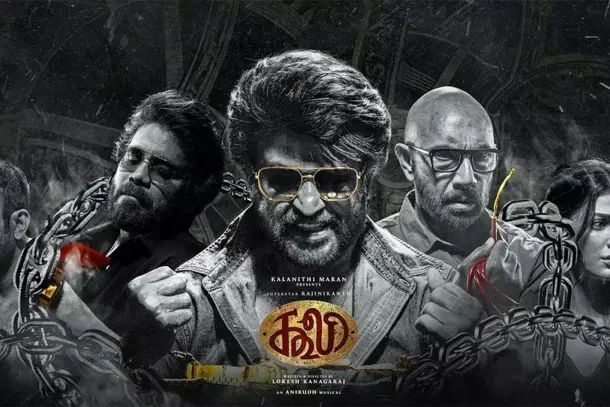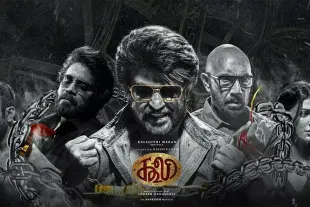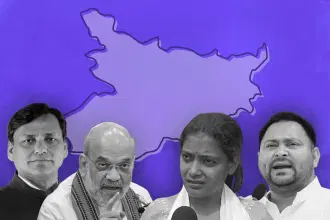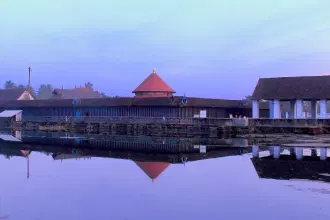Culture
Coolie: When Violence Stops Serving The Story, And Starts Being The Story
K Balakumar
Aug 16, 2025, 10:20 AM | Updated 11:18 AM IST
Save & read from anywhere!
Bookmark stories for easy access on any device or the Swarajya app.


A few hours after Coolie hit the theatres, I was scrolling through Twitter (or X, if you insist). Over and over, I saw the same unsettling question from viewers who had caught the film: 'Why did this film deserve an A certificate?' That, I realised, cut to the heart of something far more troubling. We’ve grown so desensitised to on-screen carnage that we no longer flinch.
Later that evening, I watched the film seated next to what looked like a ten-year-old boy in shorts. He had been allowed in despite the adult rating. Neither his parents nor the cinema staff seemed concerned by the two hours of gore that followed.
Had the film contained sexually explicit scenes, he’d have been turned away at the gates. Yet blood, dismemberment, and bullet-riddled bodies drew no objection. This is Kollywood’s (and other filmdoms, too) uncomfortable blind spot. We shame sex, but sanitise violence.
This normalisation isn’t unique to Coolie. It’s part of a disturbing trend I explored in my earlier piece on Leo and Jailer, where I argued that Tamil blockbusters have become alarmingly comfortable turning violence into spectacle, without a shred of moral counterbalance.
The violence fetish
Coolie barely bothers to camouflage its orgy of blood-splitting and bullet-pumping with anything resembling a coherent plot. The story lurches from one shootout to another, with logic left bleeding on the floor. But Coolie is not an anomaly. It’s the latest in a long line of Tamil films where excess is the norm and the body-count a point of pride. Coolie basically offers only blunt-force carnage, and leaves you not exhilarated but numb.
And perhaps that’s the real danger. The story itself seems to happen in some distorted, dystopian universe, where nothing resembling the every-day reality of our lives is evident. In a movie filled with literally hundreds of killings, there is no police or anything related to law-enforcement. The only delicious part in a movie produced by Kalanithi Maran is the name of the arch villain: Daya(l).
Anyway, the point is directors like Lokesh Kanagaraj, Nelson Dilipkumar, and Karthik Subbaraj, often hailed as new-age auteurs, have made violence their default narrative grammar. Their films pile up corpses with an almost gleeful precision. Even old masters like Mani Ratnam, once celebrated for sensitivity and nuance, have been drawn into this orbit, as seen in the ill-fated Thug Life, which traded emotional complexity for high-octane carnage.
Legends such as Kamal Haasan and Rajinikanth, now collaborating with these directors, find themselves embedded in spectacles where gore is the primary currency. The middle-class-friendly mix of sentimentality, humour, and heart that once defined Tamil cinema is steadily vanishing.
And no, this is not the cranky grumble of a 'boomer' trapped in the glow of yesteryear. Older films did have violence, and yes, it was sometimes brutal for its time. But never was it so obsessively choreographed, fetishised, and marketed as a stunning visual spectacle.
The real problem with Coolie is that it doesn’t even deliver the aerodynamic rush of, say, a Mission Impossible franchise or Jason Statham starrers. Those films, for all their explosions, staged action with rhythm, grandeur, and craft. Coolie, by contrast, is a blood-drenched frenzy. Its action isn’t a series of set-pieces; it’s a relentless pounding, a noise without music.
Death of honest entertainment
Where have the films gone that could make you laugh, cry, and leave the theatre lighter than when you entered? Honest-to-goodness fun and sentimentality are nearly extinct in Kollywood.
Attempts at these genres today often misfire. Maaman drowns in syrupy sentiment. Thalaivan Thalaivi dials up the melodrama until it becomes exhausting. Even a successful movie like Tourist Family tries for breezy flippancy but ends up feeling insincere and hollow.
Violence, meanwhile, is positioned as inherently cool. Directors like Lokesh Kanagaraj choreograph fights with balletic precision, staging shootouts as if they were grand opera. The viewer is invited not to recoil but to marvel at the spectacle.
And therein lies the message. Violence is an aesthetic choice, not a moral one.
Coolie is the first Rajini movie in 36 years to be slapped with the A tag. The director had stated that he did not want to 'compromise on the tone of the film.' This 'no-compromise' vision, however, translates to just a relentless, un-nuanced celebration of carnage for its own sake. It’s a film that mistakes gore for grit and mayhem for meaning.
Cultural dissonance and public apathy
Coolie is not just another film, it is a symptom. Until filmmakers, censors, parents, and audiences collectively question why violence remains the easiest sell, Kollywood’s future will stay blood-stained and emotionally barren. The most potent weapon in storytelling was never the bullet. It has always been the beating human heart.
But why do audiences, and even authorities, shrug at this saturation of brutality? The lax enforcement of A certificates, the parental indifference, and the social media cheerleading. It all points to a cultural numbness. Violence doesn’t register as adult anymore. Sex does. But the long-term social cost of normalising violence is far more corrosive. It shapes attitudes, conditioning people to see force and bloodshed as casual, even aspirational.
Tamil cinema is at a crossroads (it forever is). Will it keep doubling down on blood-soaked narratives, or will it rediscover stories that value life, love, and laughter? If the current trajectory holds, we risk raising generations unfazed by carnage yet prudish about intimacy, out of sync with the messiness and complexity of human experience.
And when cinema teaches us to cheer for brutality without beauty, it’s not just the movies that lose their soul, but the audience too.





